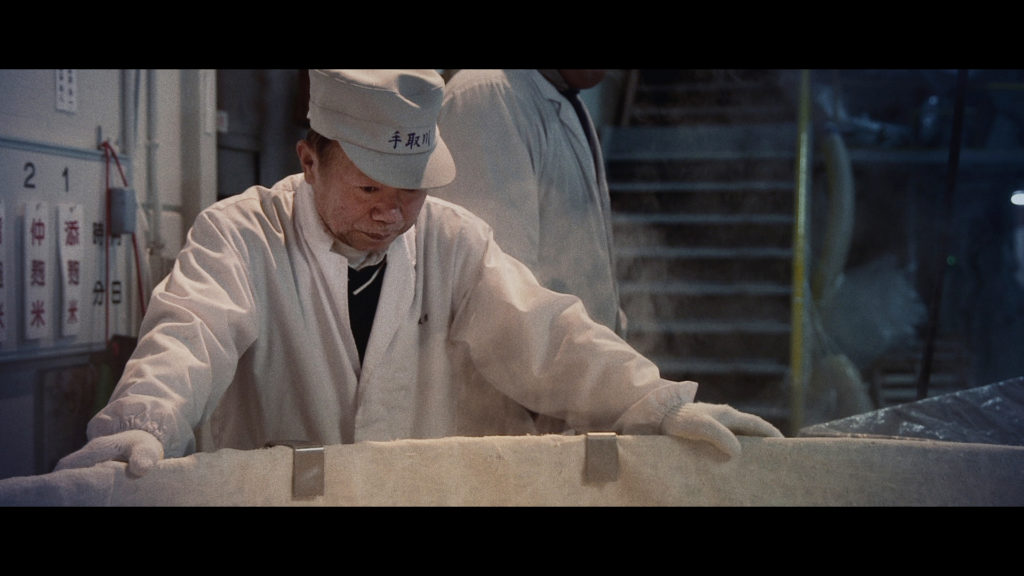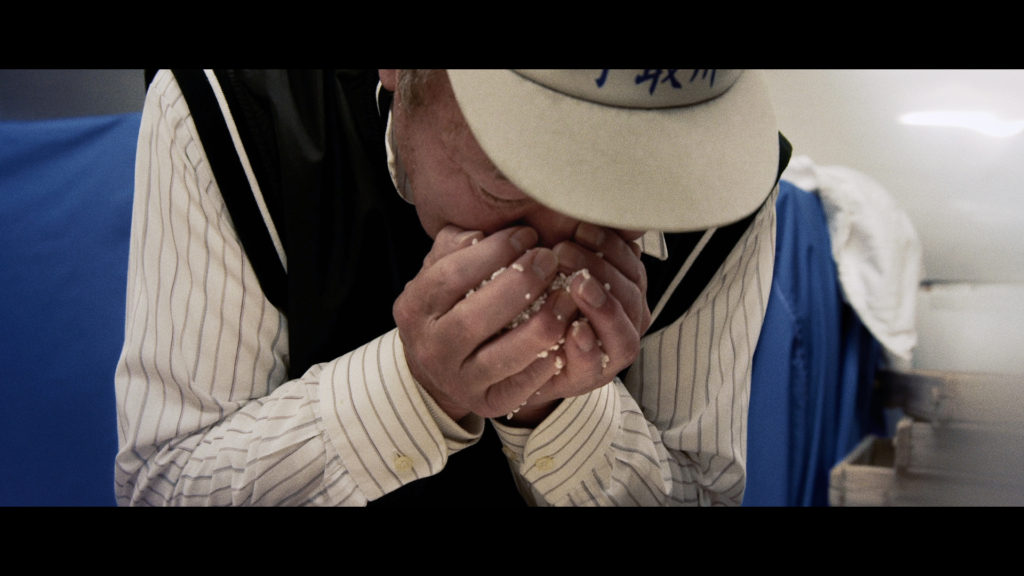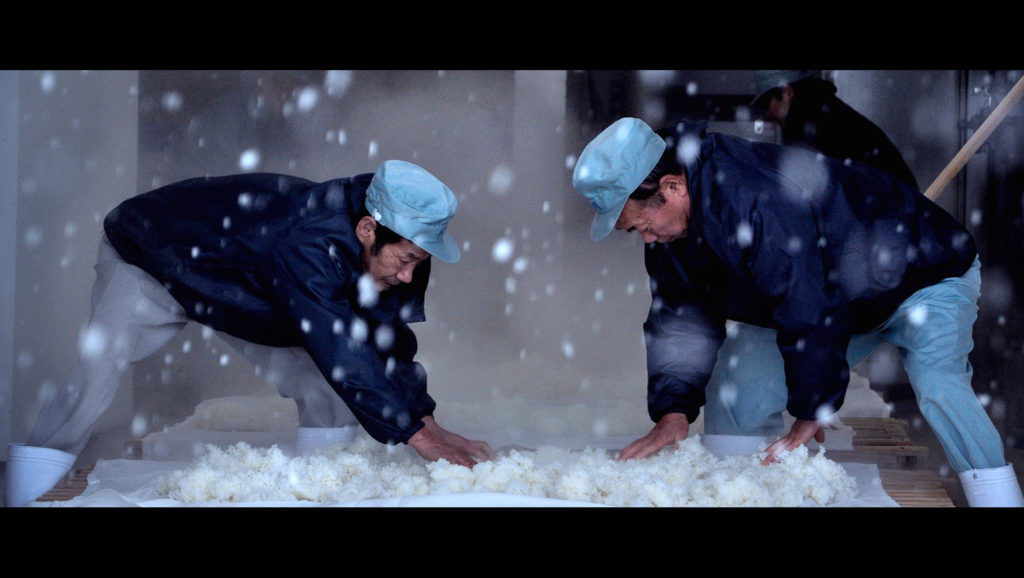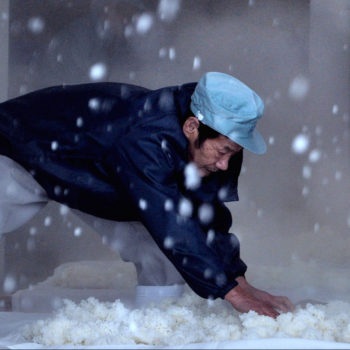This week on Chattering Class, we’re learning about saké, and our expert is Erik Shirai. His debut film is a gorgeously shot, quietly meditative documentary called, “The Birth of Saké.” It debuts this Monday, Sept. 5 on the PBS series POV, and it details the painstaking, traditional method of saké-making at a single Japanese brewery.
Interview Highlights:
On myths surrounding the start of saké
Erik Shirai: There is an old folktale. They say that a woman actually spat on some rice, and, basically, the saliva, when it hit the rice, it sort of started to ferment.
And I guess they say that’s the beginning of fermenting of rice that turned into this drink… I think it’s about 2,000 years old.
On how the Tedorigawa Brewery became the centerpiece of the film
Erik Shirai: It was very serendipitous. I actually met the sixth-generation heir who’s sort of one of the main characters in my film. I met him at a New York City fundraiser I was having for a different film, and we started talking, and we got along.
And Japanese people do this thing where you start talking and then you’re like, “You know, the next time you’re in Japan, I’ll look out for you. We’ll go out for dinners. We’ll get drinks.” You know, blah, blah, blah, and nobody ever takes that offer seriously. It’s a very casual thing.
And so, I think he was very pleasantly surprised when I ended up knocking on his brewery door saying I wanted to make this film about him and his brewery.

On what astonished him most during his first visit to the brewery
Erik Shirai: I wanted to make this first feature sort of as a tribute to Japanese people, Japanese culture, my own culture. And then, when I went up there, the first thing he actually showed me was the room, the quarters, that workers basically live — 10 by, like, 12 feet. Very small room. And three to four people would share this room for six to seven months, living there and working there. I thought, “Wow, this is crazy!” I’ve never seen that sort of lifestyle and work ethic.
On what life is like for the workers who make saké
Erik Shirai: It’s interesting because most breweries are actually done in sort of these rural areas in Japan, and it tends to be done by older farmers. How it ended up being, is that most farmers, they work and harvest during the summer. They, obviously, can’t do anything in the winter. So, it was sort of this natural path to work at someplace like a brewery so they can make money for the family during the wintertime.
Obviously, things have changed, and now you’ve got sort of a younger generation. And I think the younger generation are just very passionate about making saké.

On saké’s decline in popularity in Japan and rise in consumption worldwide
Erik Shirai: I think the bigger issue with the decline in saké’s popularity in Japan is just there’s so many more other things to drink. So, people are becoming less and less inclined to drink the thing that was around all the time or is a part of their tradition. But I think, as it becomes more popular abroad — especially in the States — more and more people will appreciate that.
At this point, [the employees at the Tedorigawa Brewery] already extended their season to be about seven months instead of six. And I think the more popular they become, the more work they have to do, and I’m not sure if all of them are going to be happy about that [laughs].
On what a day in the life of a saké maker is like

Erik Shirai: My producer and I, got firsthand– we lived there a while. So, we got a full taste of what it feels like to be there, and it’s tough. I think one of the toughest things is that you have to wake up every morning around four (a.m.). They steam rice. That’s the first thing they do for the day. Some of it’s brought upstairs into this hot, very humid koji room, sort of fermenting the rice pretty much all day long.
And the interesting thing is that this particularly brewery, at 5 (p.m.), have, like, about an hour to sort of relax, and they all relax in this little common room, you know, drink beers and talk about whatever, you know, guys’ talk. And you get a little, nice buzz going.
They go to dinner, and then they drink saké. So, by the time you go back to work in this hot, humid room, you’re exhausted, you’re pretty lit, and then that’s when the karaoke starts.
On why the world of saké is dominated by men
Erik Shirai: It’s one of those things in Japanese tradition, women are not — traditionally — are not allowed to make sushi. They’re not really allowed to get on a sumo mat. And this is one of those things.
In saké tradition, there’s a saké god that everybody bows down to. It’s a woman god, and so, the saying is: if you bring a woman into your brewery, it’s going to make this saké god jealous. But, with that said, the last couple of seasons — I’ve talked to Yachan a few times — the last two production seasons, [Yachan] has hired two women. So, it’s a changing thing.
I met one of the women there that worked at the brewery, and I can see — she’s a tough cookie — and I can see how she can roll with all these guys.
On whether the saké makers are aware the poetry of what they’re doing
Erik Shirai: A lot of these guys have done it for decades, and I don’t think they see it as this dance that, maybe like foreign eyes might look at it as a dance. It’s just everyday life for them, you know?



